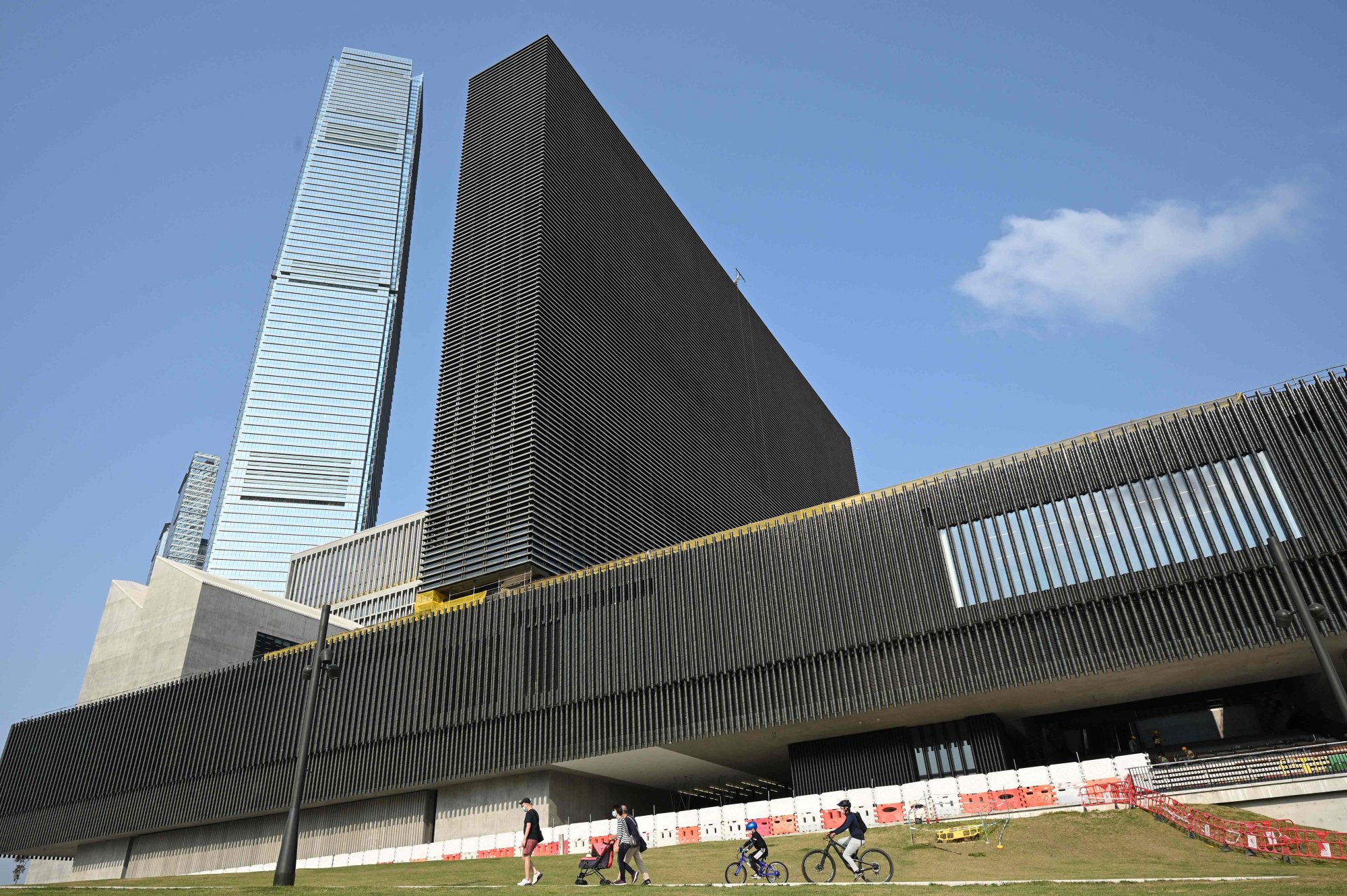
Deficit projected for Hong Kong’s arts hub narrows from previous forecast, amid hope of easing financial woes through building office zone
- West Kowloon Cultural District Authority says its unaudited operating deficit before depreciation and interest expenses will be HK$491 million for 2020-21, just half of what had been forecast last year
- The arts hub attributes the reduction to a big cut in operating expenditure amid the Covid-19 pandemic and other containment efforts, as well as better-than-expected operating income
A massive deficit projected for the multibillion-dollar arts hub in Hong Kong has significantly narrowed from last year’s forecast, with observers hoping its coming tender for an office development project would help ease financial woes.
In a Legislative Council document submitted to lawmakers on Wednesday, the West Kowloon Cultural District Authority estimated its unaudited operating deficit before depreciation and interest expenses would be HK$491 million (US$63 million) for the financial year 2020-21, just half of what had been expected last year.
The authority attributed the reduction to a big cut in operating expenditure – stemming from the forced closure of arts and cultural facilities during the Covid-19 pandemic and other containment efforts – as well as better-than-expected operating income.
Still, it is expected to run deep in the red in the next three years, with only HK$7.9 billion left out of the HK$21.6 billion government upfront endowment at the end of the 2020-21 financial year.

The 40-hectare West Kowloon Cultural District was created to make the city a leading cultural destination. So far, its Arts Pavilion, Xiqu Centre, Freespace, Art Park and Temporary Nursery Park are up and running. M+, the West Kowloon museum of visual culture, is expected to open at the end of this year, followed by the Hong Kong Palace Museum in 2022.
Critics had earlier forecast the arts hub’s cost overruns would cause the total investment to swell past HK$70 billion.
According to the latest projected financial status in the document, its operating deficit in 2021-22 would jump to HK$1.095 billion, more than double of the figure in the previous year.
That would be partly due to an increase in operating expenses arising from multiple factors, including the opening of the M+ museum, ramped up operations of the Hong Kong Palace Museum and the resumption of performing arts activities when the pandemic stabilised.
The figure is expected to widen to HK$1.44 billion in 2022-23 before worsening further to HK$1.46 billion the next year.
To generate long-term sustainable income to support its cultural mission, the authority plans to invite tenders for building the Artist Square Towers around the Lyric Theatre Complex mainly for office development in the second half of 2021.
Pro-establishment lawmaker Edward Lau Kwok-fan, who chairs the Legco committee monitoring the development of the arts hub, noted the authority would grapple with a funding gap, so it might need some financing proposals in the future.
“Inviting tenders for some projects can bring some income,” he said. “I feel the market is getting a bit better. So I hope the tender can run ideally and help relieve the financial burden.”
He added if the authority decided to seek more government funding from Legco in the future, it would have to table a comprehensive financial proposal.

But the latest estimates on operating deficits from the financial year 2020-21 to 2022-23 were already less severe than last year’s prediction.
The authority planned to finish building the Artist Square Towers in 2024 to provide a total gross floor area of nearly 700,000 sq ft mainly for office development. The establishment would be developed under a build-operate-transfer model.
“It’s rare to see a cultural district mixed with a commercial centre. It’s a good opportunity,” Razack said.
Meanwhile, the authority said HK$1 billion was used to prepare the opening of the M+ museum by the end of the 2020-21 financial year, and another HK$100 million was expected to be spent in the next three years.

